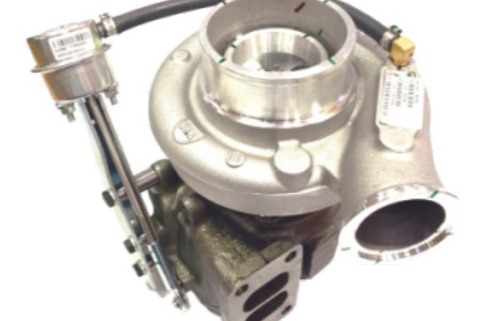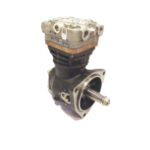Understanding Turbochargers: The Key to Boosting Your Engine’s Performance
A turbocharger is a critical component that has revolutionized modern automotive engineering. It plays a significant role in boosting engine power and efficiency, making it a popular choice for vehicles ranging from daily commuters to high-performance sports cars. Whether you’re an enthusiast looking to upgrade your car or someone curious about the mechanics behind a turbocharger, this article provides a comprehensive overview of how turbochargers work and why they’re essential for enhancing your vehicle’s performance.
What is a Turbocharger?
A turbocharger is a forced induction system designed to increase the efficiency and power output of an internal combustion engine. It does this by forcing more air into the engine’s combustion chamber, allowing the engine to burn more fuel and produce more power.
Unlike a naturally aspirated engine that relies solely on atmospheric pressure to draw air into the engine, a turbocharger compresses the air, creating a denser air charge. The result is a significant increase in horsepower and torque without increasing the engine’s size.
How Does a Turbocharger Work?
A turbocharger operates using the exhaust gases produced by the engine. Here’s a step-by-step breakdown of how it works:
- Exhaust Gas Collection: The turbocharger is connected to the engine’s exhaust manifold. When the engine burns fuel, it produces exhaust gases that pass through the exhaust manifold.
- Spinning the Turbine: These exhaust gases are directed into the turbocharger’s turbine, causing it to spin at extremely high speeds (up to 150,000 RPM or more).
- Compressing the Air: The turbine is connected to a compressor on the intake side of the engine. As the turbine spins, it powers the compressor, which draws in and compresses air from outside the engine. This compressed air is then fed into the engine’s combustion chamber.
- Increased Air-Fuel Mixture: The compressed air allows for more fuel to be injected into the engine, creating a more powerful explosion during combustion. This results in a boost in power and torque.
- Cooling the Air: In many turbocharged engines, the compressed air passes through an intercooler before entering the combustion chamber. The intercooler cools the air, increasing its density and further enhancing engine performance.
Benefits of a Turbocharger
Adding a turbocharger to a vehicle offers several benefits, including:
- Increased Power: The primary advantage of a turbocharger is its ability to significantly boost engine power without increasing engine size. This is especially beneficial for performance vehicles, where power is a priority.
- Better Fuel Efficiency: Turbochargers can improve fuel efficiency by allowing smaller engines to produce the same amount of power as larger engines. This is why many modern manufacturers use turbocharged engines in smaller cars to meet fuel efficiency standards while maintaining performance.
- Reduced Emissions: Turbochargers help burn fuel more completely, reducing the amount of unburned fuel and thus lowering exhaust emissions. This makes turbocharged engines more environmentally friendly.
- Lightweight Power Boost: Because turbochargers increase power without adding significant weight, they are an ideal solution for boosting performance without the penalties of added weight from a larger engine.
Turbocharger Maintenance Tips
To ensure optimal performance and longevity of your turbocharged engine, regular maintenance is essential. Here are a few tips:
- Use High-Quality Oil: Turbochargers rely on engine oil for lubrication. Always use high-quality, manufacturer-recommended engine oil and change it regularly to prevent oil breakdown, which can damage the turbo.
- Warm-Up and Cool-Down: Allow the engine to warm up properly before driving aggressively. Similarly, after driving, especially after hard acceleration, let the engine idle for a minute to allow the turbo to cool down before shutting off the engine.
- Check for Oil Leaks: Inspect your turbo system regularly for oil leaks. Leaking oil can damage the turbocharger’s internal components and reduce its efficiency.
- Regular Air Filter Checks: A clean air filter is essential for ensuring the turbocharger gets the air it needs without contaminants. Replace the air filter as recommended to prevent debris from entering the system.
- Monitor Turbo Boost Pressure: Keep an eye on your vehicle’s boost pressure. Excessive pressure may indicate issues with the turbocharger, such as a wastegate failure or a problem with the compressor.
Turbocharger vs. Supercharger: What’s the Difference?
While both turbochargers and superchargers are forced induction systems designed to increase engine performance, they differ in how they’re powered. A turbocharger is powered by exhaust gases, whereas a supercharger is powered directly by the engine via a belt or chain connected to the crankshaft.
The choice between a turbocharger and a supercharger depends on personal preference, driving habits, and the specific needs of the vehicle. Turbochargers are generally more fuel-efficient and provide better power at higher RPMs, while superchargers deliver immediate power at lower RPMs.
Conclusion
A turbocharger is a vital component for anyone looking to maximize the performance and efficiency of their vehicle. By compressing air and delivering more oxygen to the engine, a turbo can significantly increase horsepower and torque without sacrificing fuel efficiency. Whether you’re upgrading your existing engine or looking for a more powerful ride, understanding how turbochargers work and how to care for them is crucial to getting the most out of your engine.





